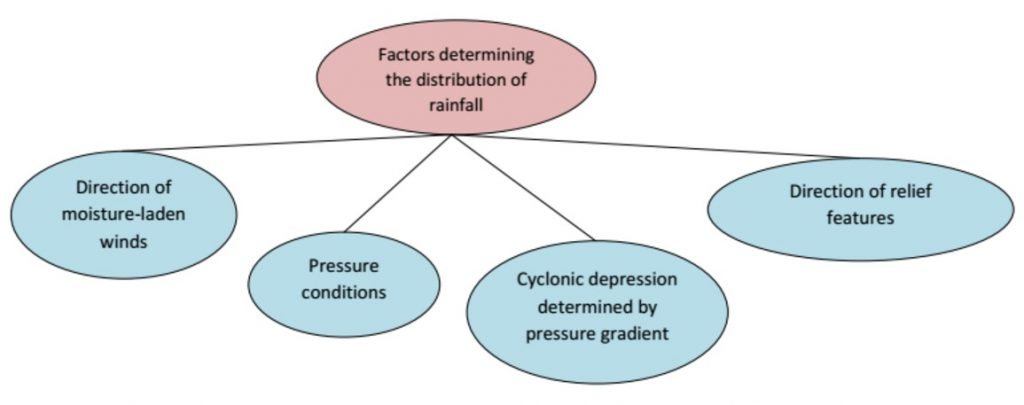As we all know India falls in the monsoon climatic region. Rainfall is the backbone of Indian agriculture and economic activities. Below we will have a look at the key features of Indian monsoon as well as its distribution pattern.
Features of Rainfall in India
- Rainfall in India mainly occurs in the months of July, August and September.
- The Indian rains are chiefly orographic in nature. As a result, the regions situated on the windward side receive greater rainfall than the regions located on the leeward side.
- Only a scant amount of rainfall is received from cyclones and convectional rainfall.
- Monsoon in India is irregular, not well distributed and unpredictable. While there are floods in some regions, the other regions face drought.
Most parts of the India do not receive rainfall during the winter season. Some areas which receive rainfall during the winters are –
- Central and northern parts of India get occasional rainfall during winter.
- Weak temperature cyclones lead to rainfall in Delhi, Haryana, Punjab and western Uttar Pradesh. This rainfall benefits the rabi crops.
- Northeastern areas of the country also receive winter rainfall.
- In October and November, northeast monsoon receives heavy moisture while blowing over the Bay of Bengal and cause enormous rainfall over the coast of Tamil Nadu and the southern tip of Andhra Pradesh.
Distribution of Rainfall in India

Regions receiving hefty rainfall (more than 200 cm)
- Slopes of the Western Ghats and the Western Coastal Plains.
- Meghalaya Hills (Garo, Khasi and Jaintia), the southern slopes of the Eastern Himalayas, Assam, Arunachal Pradesh and West Bengal.
Regions receiving moderate rainfall (100-200 cm)
- The southern part of Tamil Nadu and the northern parts of Andhra Pradesh.
- Middle Ganges Valley, some parts of the Western Ghats, Eastern Maharashtra, Madhya Pradesh and Odisha.
Regions receiving low rainfall (50-100 cm)
- Parts of the Deccan plateau consisting of the regions of Karnataka, Andhra Pradesh and Tamil Nadu.
- Eastern Rajasthan, Punjab, Haryana and Kashmir.
Regions receiving scanty rainfall (5o cm and less)
- Northern parts of Kashmir, southern Punjab and western Rajasthan.
- The rain shadow regions of the Western Ghats lying in the Deccan Plateau.
Also read about >> Brief Note on Indian Climate, Monsoon and Rainfall
2 Comments on “Key Features and Distribution Pattern of Rainfall in India”
Thanks
Thank you